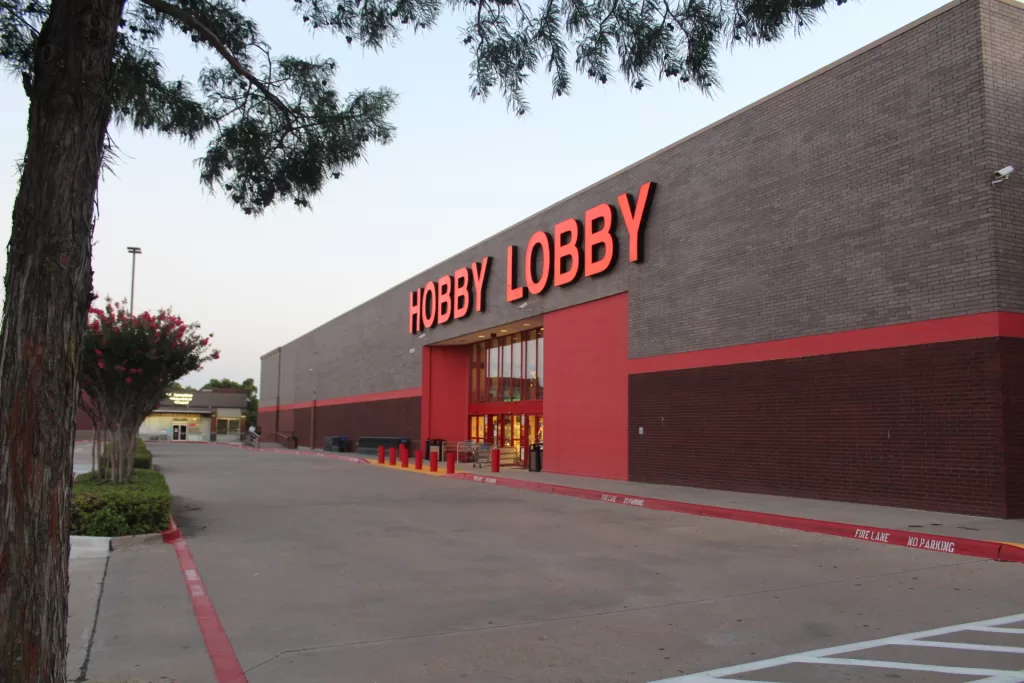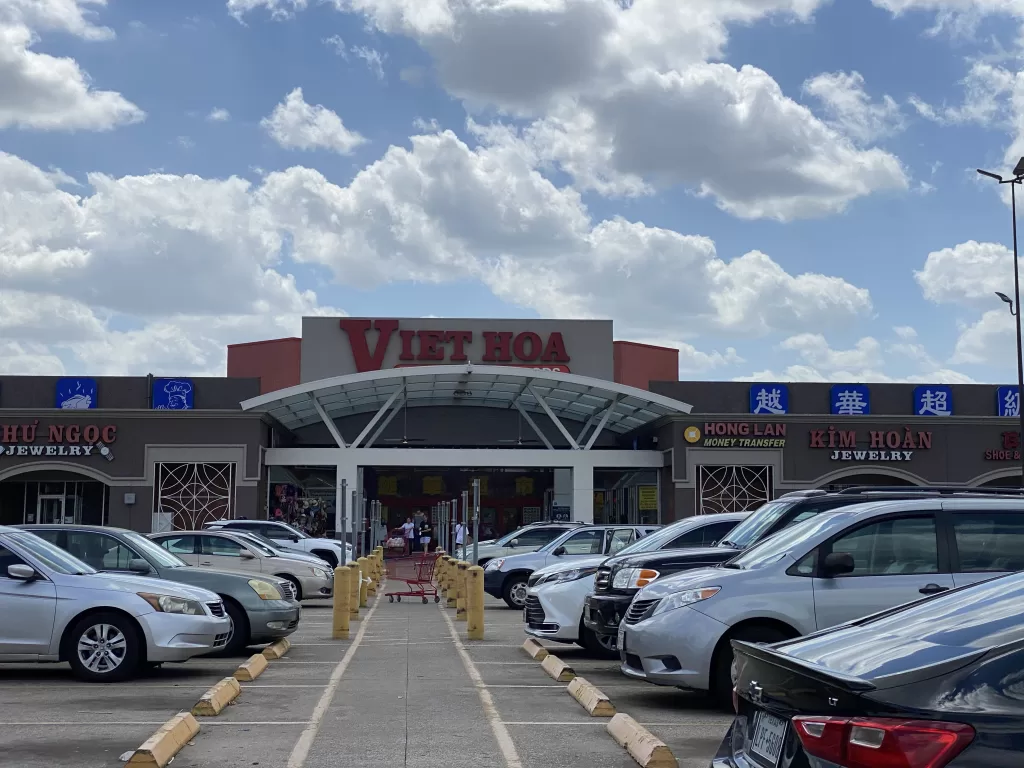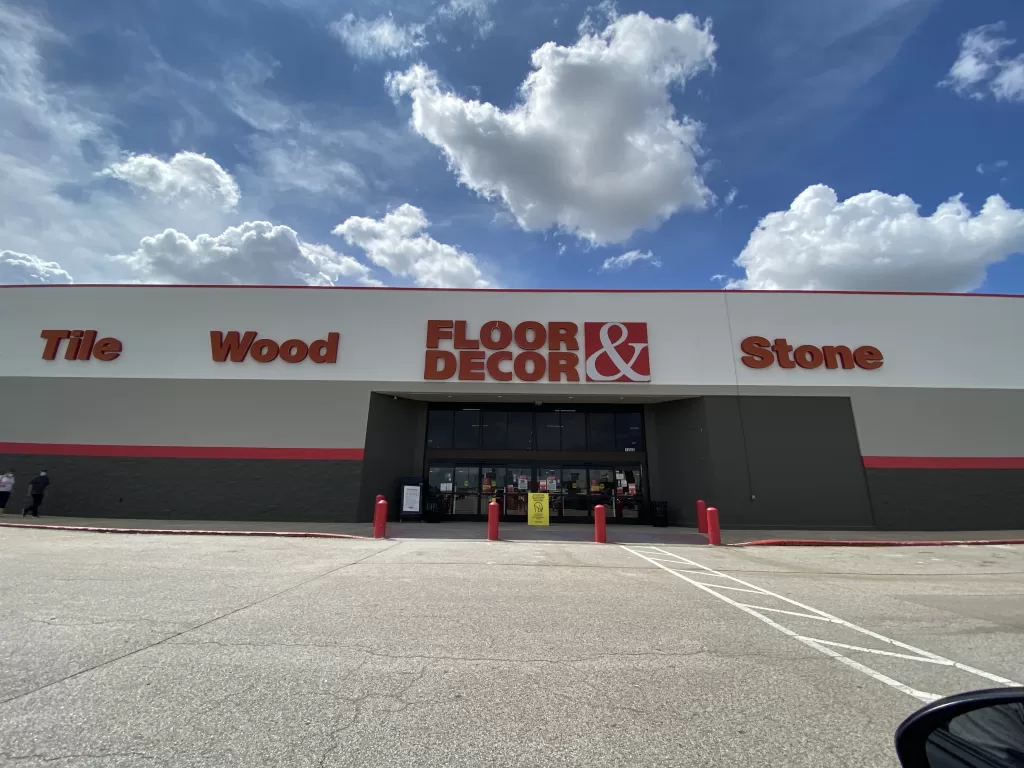Howdy folks, and welcome back to Houston Historic Retail. Today we’re discussing the long-departed Venture Department Store on the 30th anniversary of entering Houston. Rarely have things gone worse for a chain than Venture’s disastrous expansion into Texas. A story that’s often misconstrued; while Venture’s time in Texas did ultimately lead to their demise, the pieces which led to the company’s drastic decline were laid years prior. So let’s start off with a bit of Venture history. Venture was an idea born out of the May Department Store company in the late 60s, which wanted to enter the booming discount department store industry. Management would look to competitor Dayton Hudson’s discount chain Target as inspiration. In fact, they would look so deeply into Target that they would hire away John Geisse, who had essentially spearheaded most of the Target effort. The stores were incredibly similar to Target, from carrying higher-end options than competitors all the way down to the prominent use of red on their interiors. May was intent on growing Venture quickly, opening their first store in 1970 and being up to 25 locations by 1976.

Venture’s early expansion was focused solely on the Midwest, mainly in Missouri, Illinois, and Kansas, usually located in smaller cities or suburbs. By 1983, continued expansion had brought Venture near Texas into Oklahoma. It also gave them their first taste of Woolco buildings, which would play a role in their expansion throughout Houston. This new Southern Market proved fruitful for Venture, and plans were made to continue in this direction. Overall though, Venture’s growth was relatively slow compared to competitors. Also, Walmart and Kmart both had nearly a decade’s head start against Venture. Despite this, the chain had a distinct advantage over competitors in the Midwest, growing loyalty through a good reputation and, in the case of Chicago, the purchase of their local discount department store, Turn Style. Throughout the late 80s, Venture would continue to build upon its Midwestern core. Still, development in Oklahoma would nearly grind to a halt, partially due to the effects turbulent effects of the crashes and booms of oil in the 1980s. While many (even those of us not alive during the decade) know how horribly this impacted Houston and Texas as a whole, the damage was even more severe in Oklahoma. In an economy in which discounters usually thrive, Venture was struggling to expand outside of its established territory, thanks large in part due to a lack of recognition. Realizing that if they wanted to enter a market, they would need to do so with full force, Venture moved eyes further South to Texas. By now, it was the early 90s, and Texas was booming. As a state, we had focused on diversifying our economy since the 70s energy crisis and were a population magnet at the time.
With growth on the brain, in early 1992, Venture made ambitious plans for Texas, which included five stores each in Houston and Dallas and a distribution center to support their operations here, and in Oklahoma. Future plans announced on day one included reaching about 50 stores in Texas, including moving into San Antonio and Austin. This is the first point of contention; the question is, was Houston overstored? News reports from the time suggest that Houston had too many discounters for Venture to make much of an impact. Venture contended that Houston had fewer square feet of discount department stores per person than any other city the company did business in. Both sides made bold claims, so what was the reality? Well, the first thing to consider is the high mobility in Houston. Major areas of the city rely on personal cars, lacking public transportation. Houstonians had, and still have, no issue driving a few miles to get to a Target over a Walmart. While this could work in Venture’s favor, it could also backfire. The next point to consider is the aged state of Houston’s department stores in the 90s. While Target and Walmart had some up-to-date locations in the suburbs, many Houstonians were stuck shopping in 1960s Kmarts. If Venture could tap this market, they would undoubtedly win out in the end, so it’s my opinion no, Houston was not overstored.

By 1993 Venture had made it to their planned ten stores in Texas, although with a 6-4 split between Houston and DFW, respectively, rather than the planned even split. This brings us to our next point, did Venture understand the Texas consumer? Those of us who shopped at Venture remember some oddities about the store, like how it closed for months to remerchandise and reset. Venture’s contention from the start was that they understood the market better than anyone, appealing to local culture by including sporting goods, western wear, and spicy foods at Cafe Venture. All items which apparently were not normally found in their Midwestern counterparts. By 1994, Venture announced their next Houston store included that this next location would see an increase in size to carry more warm weather merchandise, adding a basic lawn and garden selection as well. Despite backtracking on what had been said before, Venture did assure that they were on track to hit their 50 Texas store mark by 1998. In the summer of 1995, Venture tried to restructure itself as a “value-priced retailer.” Reducing the variety of merchandise they offered, looking to offer better values and attract more shoppers. They would also adopt Walmart-style policies, such as cutting open cartons to place on shelves, offering bulk deals, and stacking pallets of merchandise in the aisles. While expansion was still underway in 1995, with Venture attacking Corpus Christi and Amarillo, it was curtailed and stopped before the end of the year. In March 1996, Venture would remerchandise again, backtracking, bringing in higher-end merchandise, and removing things like automotive which had been expanded. This was when the mentioned closures occurred, with two Houston stores closing for nearly three months. I think this flip-flopping merchandising is easy proof that, indeed, Venture did not understand the Texas Consumer.
The final major point to address; did Venture not do its homework when it came to selecting store sites? This is the first question where I think we’ll have a really mixed answer. The easy way to put it is yes for most and no for a few. While Venture did have a realty department, it was almost certain they were depending on input from a local realtor. In looking at locations, it almost sounds like the local partner took Venture as a closer competitor to Kmart than Target. The locations were not horrible by any stretch of the imagination, but they were not great either. Also, Venture was hugely public about where they were planning to build, leading to disappointment in some cases when abandoning store plans or seemingly price gouging in other spots. By the end of 1996, Venture was selling excess property throughout Texas. The company would also try adding Dollar Stores to weaker locations, including three in Texas. Finally, while a handful of stores in Texas opened outside of DFW and Houston, the lack of focus in this market was likely a mistake. I think this can be considered to add up to, yes, Venture did not do their homework for most locations. There are, however, some exceptions that should be stated. The locations were usually very high traffic, but in neighborhoods that could not support a standard Venture. This is what largely led to the merchandise shuffle. However, Venture’s existing reputation couldn’t easily be overcome, and growing competition in Venture’s core markets put the company in a dangerous situation. One store worth mentioning was the Willowbrook location which could have easily been the crown jewel of Houston. However, with the constant remerchandising, and months-long closure, it failed to catch on. The final stores opened from 1994 to 1996 did indeed reflect great markets for Venture, such as Meyerland Plaza, Sugar Land, and Westheimer and Gessner. These locations did include a hefty price tag, though.

In July 1997, after not seeing needed improvements, Venture announced they would sell 20 locations in the chain to Kmart. While stores all across the chain would be sold, 15 of these locations would be Texas stores, with ten from the Houston area. This large number of closures would lead many to associate Texas, specifically Houston, with the death of Venture. As we’ve reviewed, Venture made some critical mistakes expanding into Houston. However, some key early points include the early expansion into Oklahoma. The use of Woolco buildings (they failed while expanding into Texas and Oklahoma as well!) was another early mistake. Also, as previously mentioned, a lack of attention to their core market was one of the larger culprits. Part of the evidence to support this is the relative success the converted Kmart locations had. While Kmart would exit Houston and DFW during the 2003 bankruptcy, the locations they acquired in the Midwest survived for much longer. Ultimately, it’s likely fair to say it was a fifty-fifty split between the aforementioned issues. Venture likely would have been equally doomed trying to enter any other market with the same force. Thirty years ago, Venture started here; only five years later, they failed, closing the remaining eight locations in Texas, along with the rest of the chain in bankruptcy.







Reading the whole “we are Texas-aimed because we are selling stereotypically Texas stuff” info from the blog just reminds me of what HEB is doing now, but where it does it from actual heart and Texas pride, Venture kinda just thought “If Texans love Texas so much, then why don’t they buy it!” (to paraphrase the typical punchline)
The Willowbrook Venture was my local Venture and that store had a lot of issues. For one, it didn’t have a cafe at all for some reason. The Kmart down the street closed their cafeteria around 1990 and never reopened it as a KCafe/Little Caesars and Kmart didn’t have a cafe either when they moved into the old Venture. I’m not sure why this area was lacking in the cafe area.
But, anyway, the main problem the Willowbrook Venture had was location. They were the first discount store to locate themselves right near the Willowbrook Mall. Wal-Mart opened on the other side of FM 1960 near the mall a year or two later, Kmart eventually replaced the Venture, and now Target is the only discount store near the mall. But, still, Venture was the first. Unfortunately for Venture, they picked a location that was plagued by traffic so getting in and out of the Venture was difficult and this was made worse as 249/FM 1960 re-construction efforts were ongoing. I think this had a role in the store temporarily closing and having a second grand opening. Even if the store survived in Houston, that location would have dealt with lack of visibility problems since it is located by the FM 1960 bypass that was eventually built.
As you say, the Willowbrook Venture could have been a crown jewel for the chain in Houston and the state, but it ended up becoming a botched effort. That said, as much as that store lacked customers, I still seem to remember it doing better than Kmart did in the same building. That’s not saying much, we’re talking about an era of Kmart which led to Kmart filing for bankruptcy.
Venture stores were a bit boring except for a couple of aspects. The most recognizable one was their hybrid open and drop ceiling which seemed quite revolutionary at the time. Some other retailers, like Publix, still use designs like that, but it was very odd for the time. Also, Venture had a way of putting departments in diagonally in their corner of their stores which is a bit hard to explain, but it was quite unique looking.
Venture was a bit boring and didn’t differentiate themselves from other discounters, mainly Wal-Mart who was doing exceptionally well at the time, but we did still shop there somewhat regularly so I don’t think their merchandising and pricing was as bad as sometimes they were accused of being. Even Targets were occasionally pretty sparsely filled with customers at times in the 1990s, something which I think is forgotten today, so I don’t think Venture was that much of a worse effort than Target and Kmart, but Target had been in Houston 20 years prior to Venture showing up, they had a better feel for real estate in the area, and their stores were a bit less boring feeling than the grey Venture stores (Target was using a lot of neon and bright colors at the time in their store design). Target was also stronger in other markets so they were working from a stronger position. It is not a surprise then that Target survived and Venture didn’t. Target could continue to grow while investing in their existing stores in older markets. Venture seemingly had more trouble with that.
Even the dramatically remodeled façade of the Viet Hoa still contains those angled red tile pillars. The angled red tile at the entrance is about as iconic as anything Venture-related got in Houston, given how short-lived they were here.
The “spicy foods” at the Venture Cafe seems like a desperate grab on something that wasn’t there…their whole marketing scheme sounds like they read a book instead of doing real market research. Literally copying what everyone was doing, either making a very basic menu of hot dogs, popcorns, and snacks, or partnering with a fast food company, would’ve been a better choice. They had also excluded garden centers (which Kmart and Wal-Mart had)…and entered at a time when Wal-Mart Supercenter was beginning to ramp up operations in the suburbs. If they created super-sized stores with food departments, then things might’ve been different.